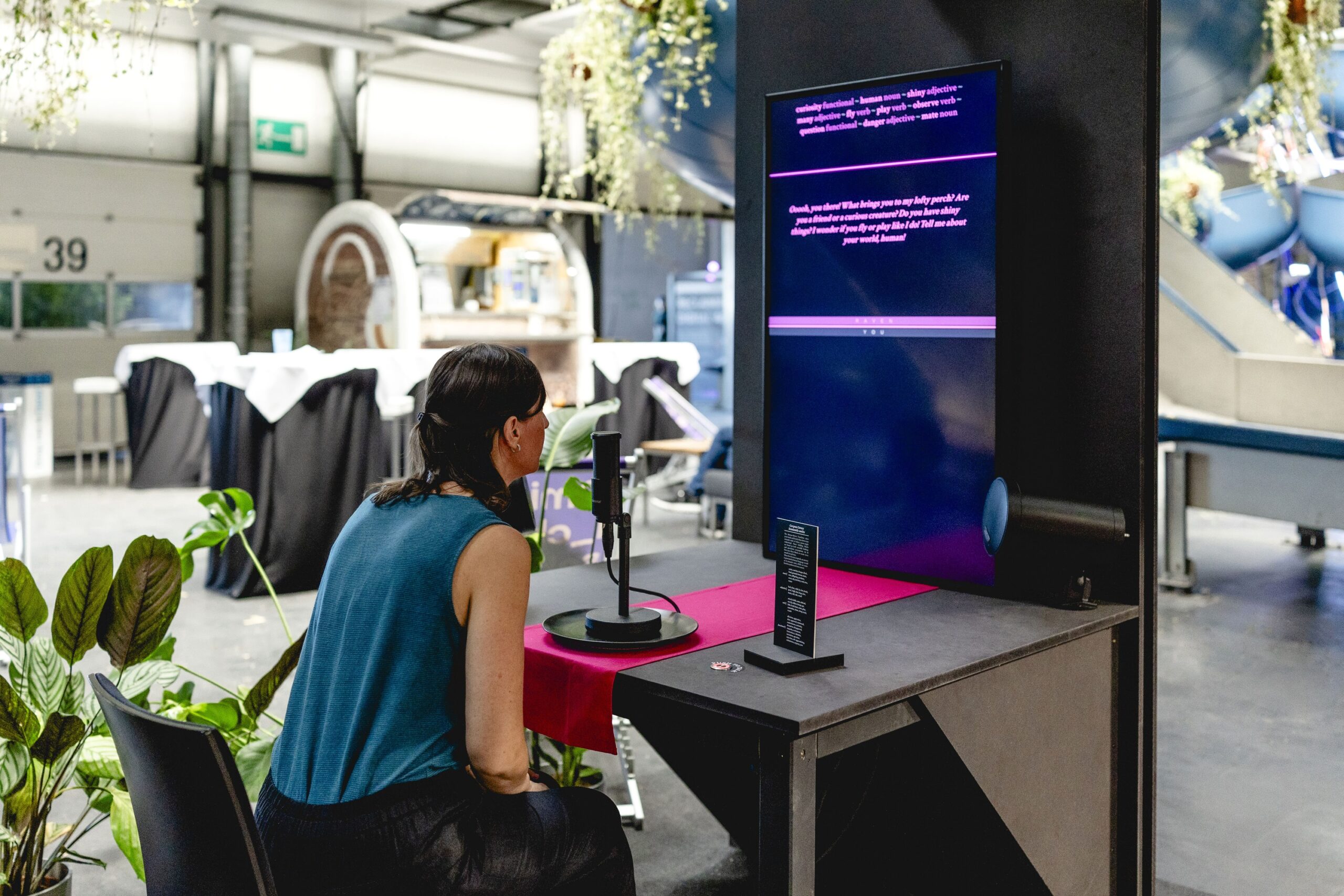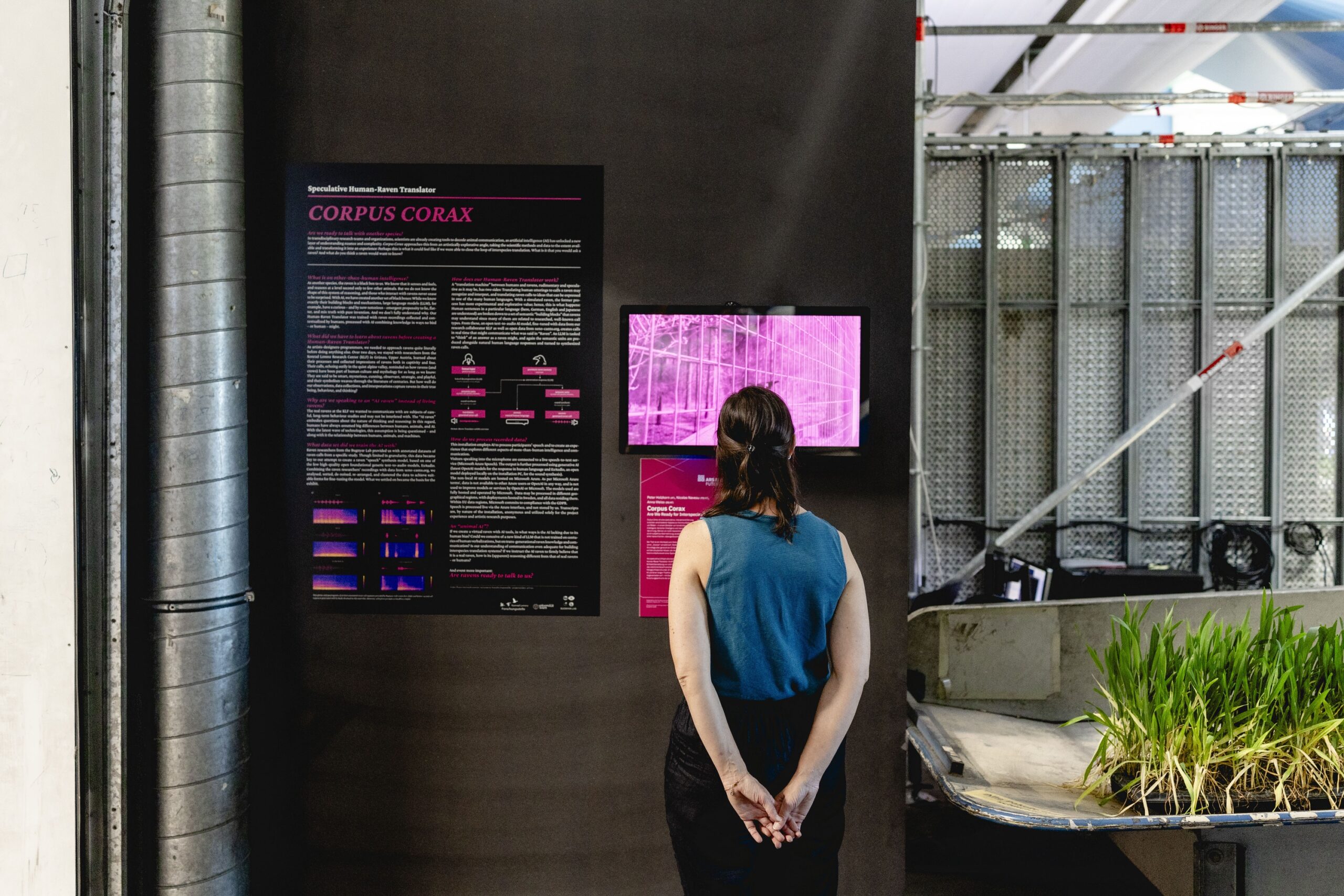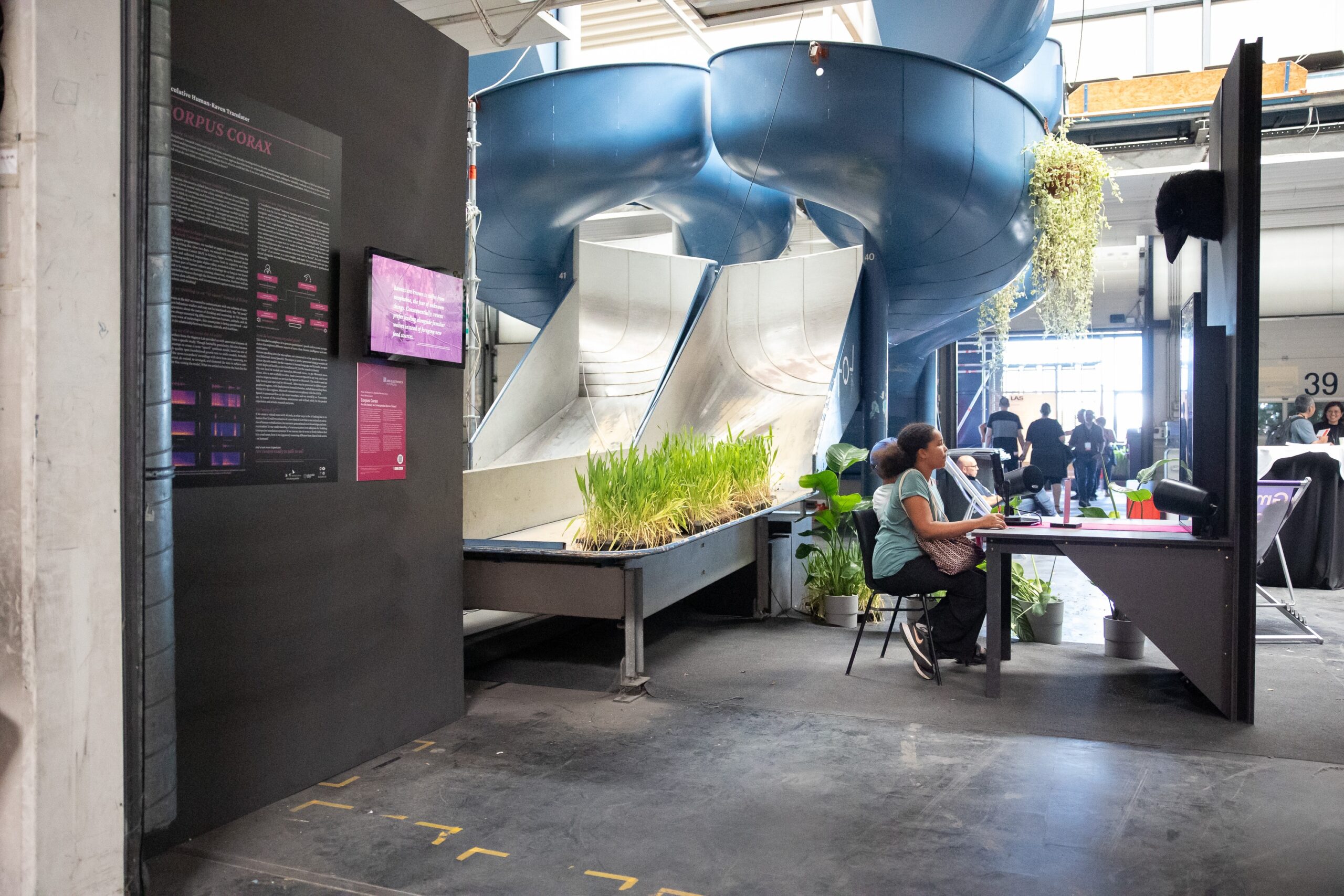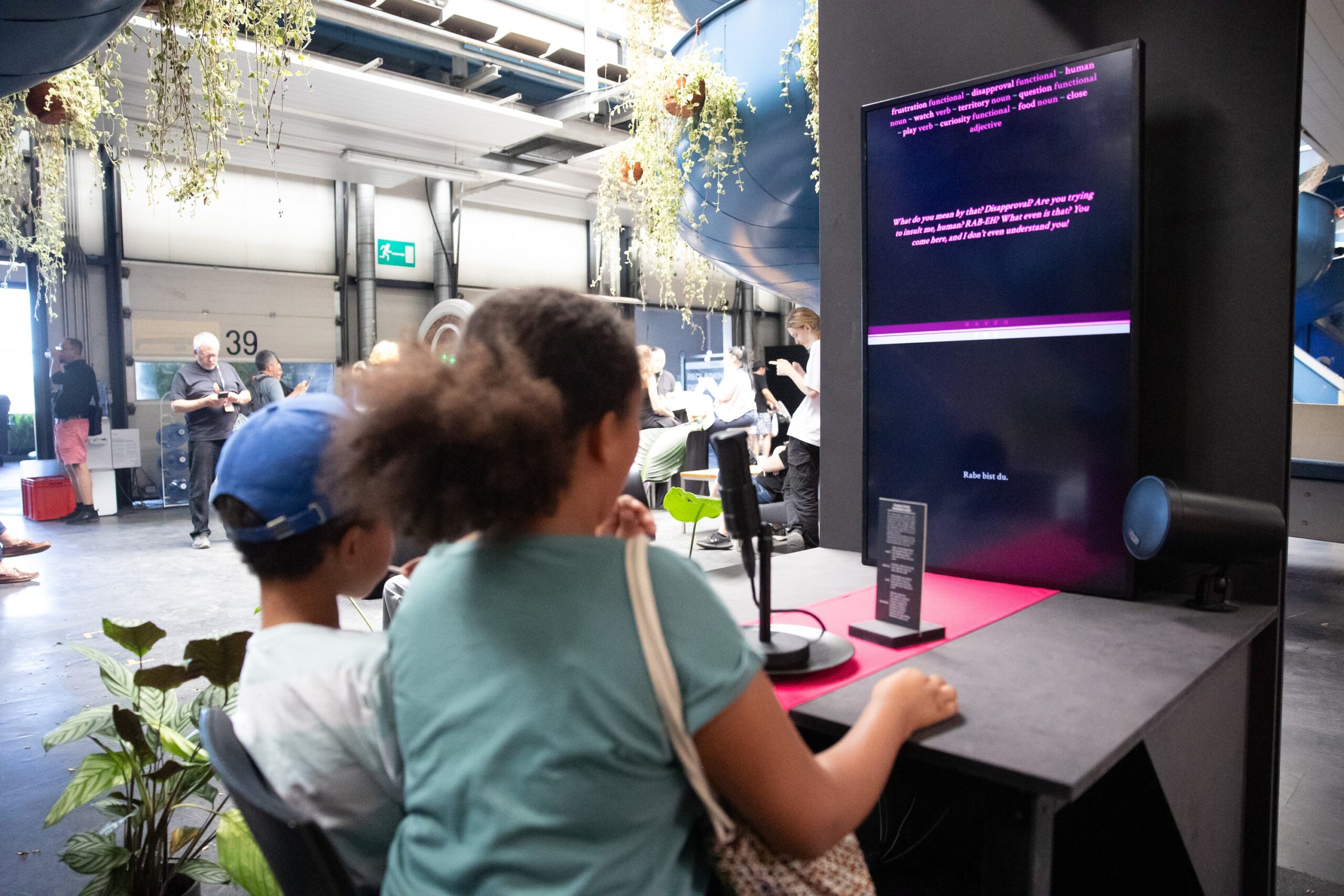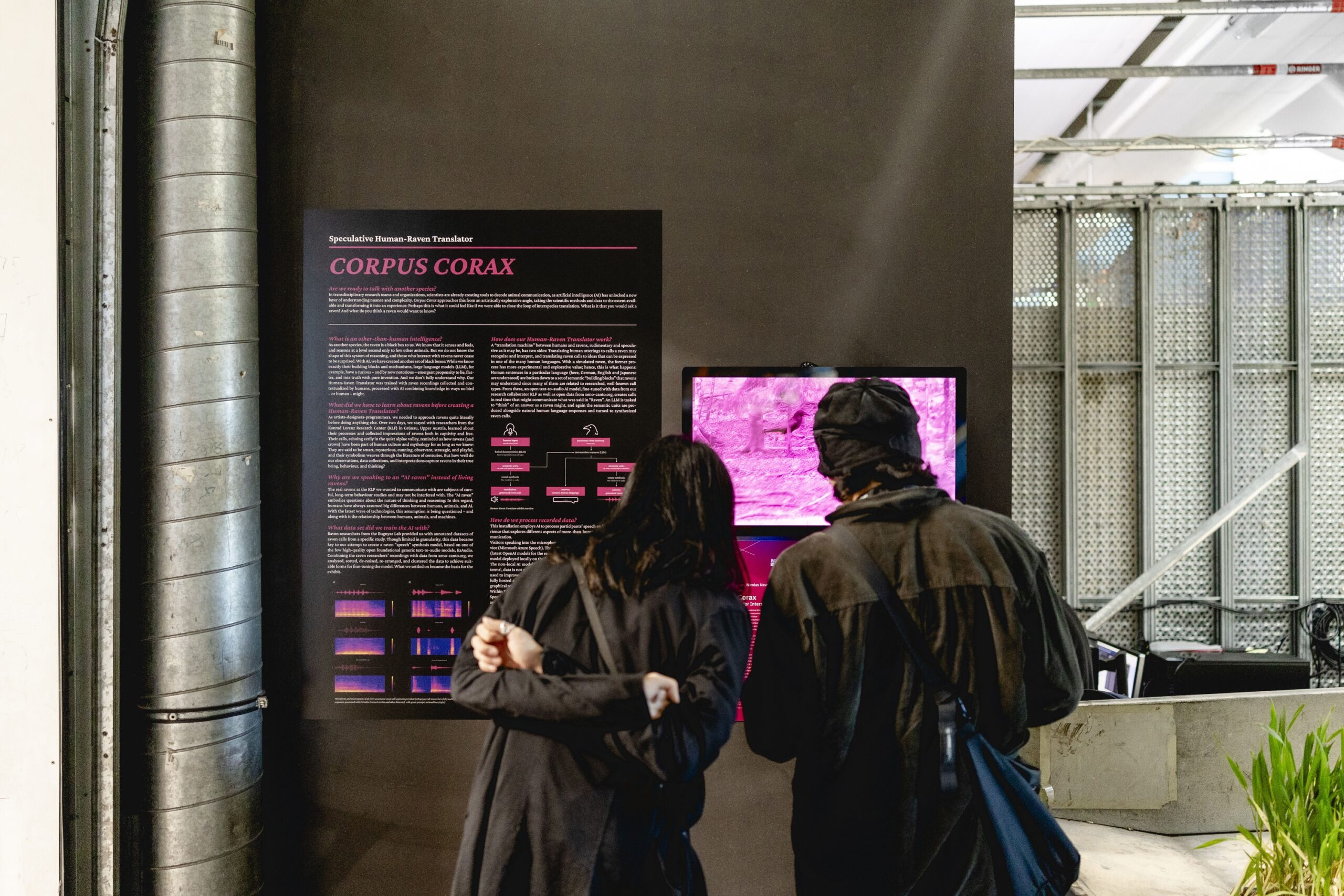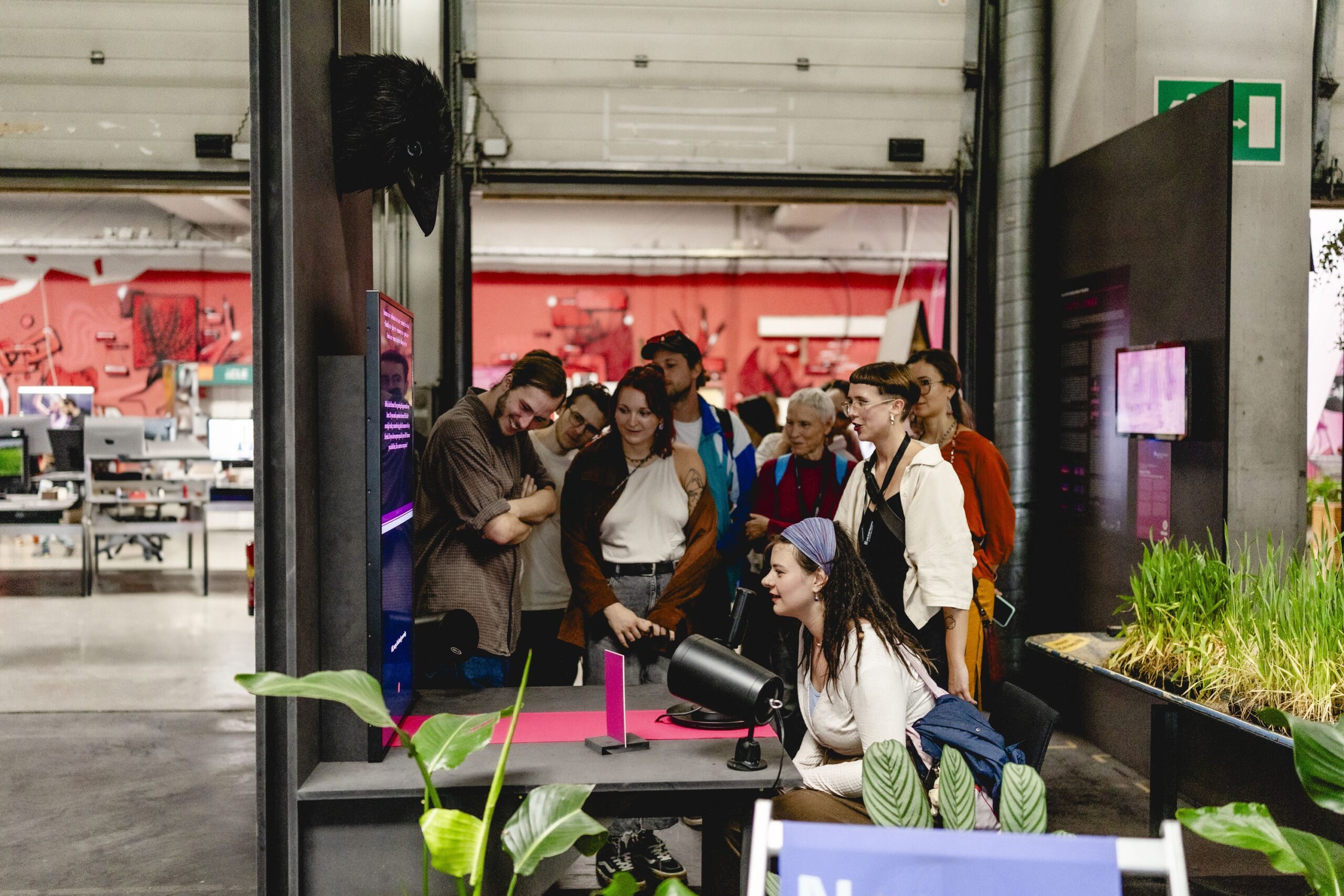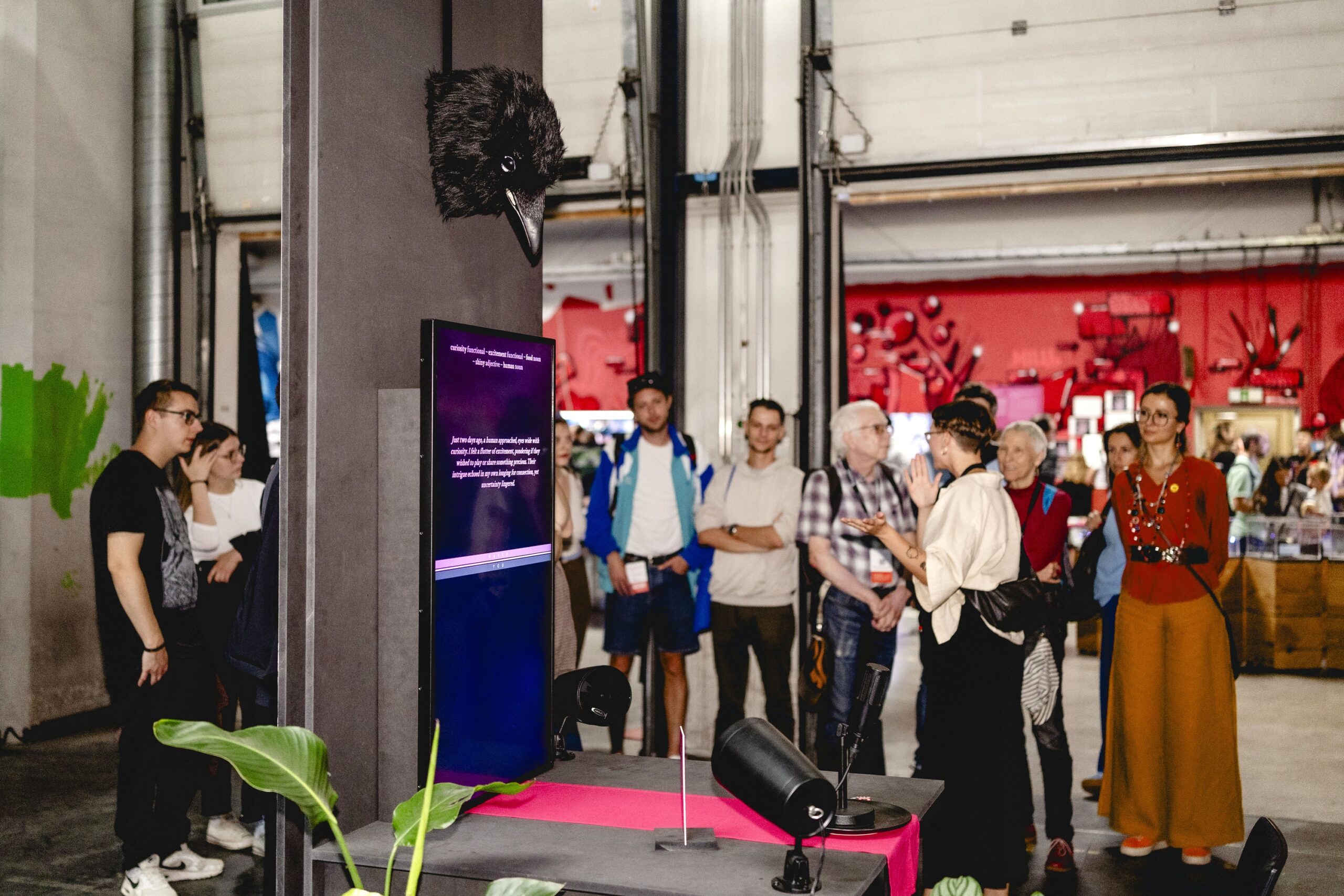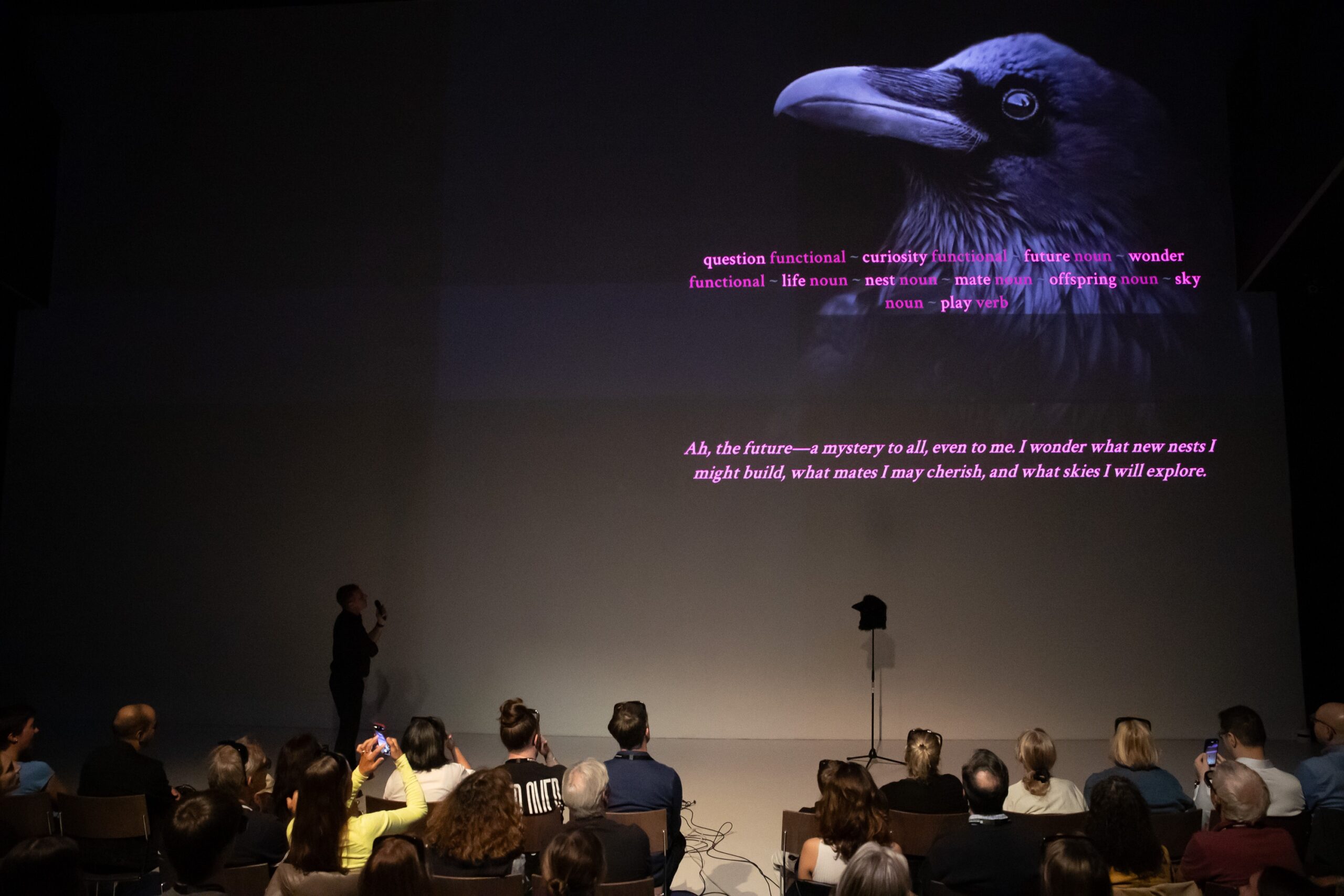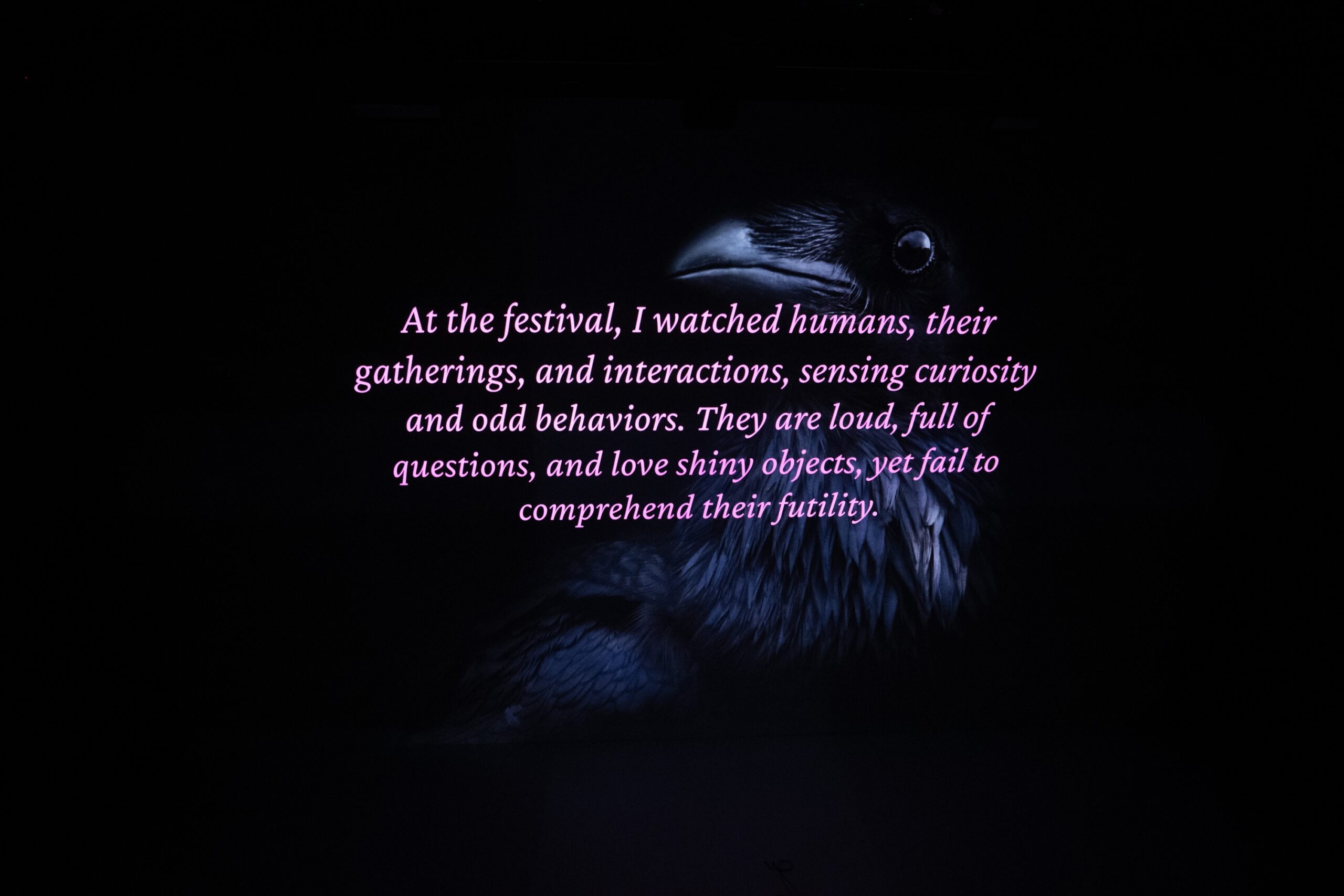Corpus Corax is a speculative, interactive interspecies experience that immerses the visitors in raven communication in an age of artificial intelligence, animal intelligence, and human confusion.
As animal life is being monitored with modern technology, we also ask: Can we understand non-human species not only from a top-down, data-driven perspective, but also through subjective and perceptual experience?
Corpus Corax is one of the two winning projects of the Ars Electronica Futurelab’s internal competition Ideas Expedition 2025. The title is a wordplay on the name of the common raven, Corvus Corax. “Corpus” points both to the notion of a “text corpus”, the basis of all generative language models, and to the original meaning of corpus as a physical body, which shapes a species’ world of experience and communication.
As speculative infrastructure technology, our Human-Raven Translator (HuRT) is an experiment to translate from and to “Raven” in real time, exploring natural language processing and generative sound synthesis. It builds on recent innovations in generative AI systems and a rich tradition of studying bird behavior. Incorporating data provided by our partner, the Konrad Lorenz Research Center of the University of Vienna, we approach behavioral research insights from an explorative angle.
The project features an experiential exhibit at the Ars Electronica Festival, based on typically human, formalized interaction scenarios, like a conversation over dinner. From a similarity in vocal range to tool use, there are many aspects that connect us with this species in uncanny ways. We build on this connection to challenge and stimulate the visitor to engage.
This project was part of the Open Futurelab at the Ars Electronica Festival 2025.
Credits
Ars Electronica Futurelab: Peter Holzkorn, Nicolas Naveau, Anna Weiss
Corpus Corax is a winning project of the Ars Electronica Futurelab Ideas Expedition 2025

